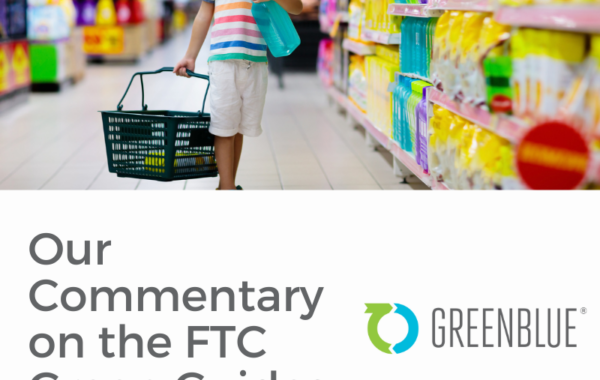October 31, 2017
It’s easy to jump to the conclusion that consumers don’t recycle as much as they could or should because they’re lazy or stubborn — but is that really the case? And even if it were, how do we bridge the gap between what consumers need and what we industry players can provide? The blatant truth is, there’s a lot of information out there about recycling. It can quickly get confusing for those of us within the recycling or sustainability industry, much less the average consumer. Confusion and uncertainty are common barriers that often interfere with consumers engaging in recycling. However, brand owners and packaging converters are well poised to make subtle packaging design changes that can subtly nudge their consumer to engage in more frequent and precise recycling habits.
A growing number of brand companies are establishing individual and ambitious packaging recyclability goals. While these trends are positive and exciting, it’s important to parallel that progress with increased consumer engagement. So how do we do this? How can companies influence their consumers to engage in recycling more, and more accurately? At the Sustainable Packaging Coalition (SPC) annual member conference, SPC Advance, Dr. Remi Trudel, a professor of marketing at Boston University and Caroline Cox, Project Associate at SPC discussed how industry players are well poised to effectively help propel recycling behavior with minimal effort through subtle, yet effective design and messaging approaches.

Dr. Remi Trudel
There’s a lot to consider when designing a package with recycling in mind. Many factors influence consumers’ likelihood to engage in recycling, however unconscious they may be. Anything from shape distortion, association with a consumers identify, even mood and weather are all widely variable factors that influence consumers likelihood to recycle. By addressing these variables when designing a package, brands can influence how likely their consumers are to engage in the recycling of their packaging.
Specifically, certain physical and graphic indicators are more likely to automate recycling behavior. According to research, consumers are significantly less likely to recycle a package or material if it’s crumpled or torn after use – even if they know it to be recyclable. Designing a package to minimize the opportunity of distortion throughout use will likely help propel consumers to actually recycle it. This is likely because it’s psychologically easier to just toss something in the trash when it is tampered and imperfect. Preservation of the original shape maintains the sense obligation to dispose of a package responsibly as it is more linked to the consumer’s experience.
Similarly, consumers also care how personal their experience with a brand is, and thus tend to value objects more when linked to their identity. Brands or packages that put a larger emphasis on building strong personal associations with their consumers are also more likely to have higher recycling rates.
While it’s important to leverage variables that influence the frequency of recycling behavior, it’s just as important to reinforce proper recycling. Recycling facilities could have a lot of material to sort through, but does it help the cause if the bales are littered with contaminants? No. That’s why it’s also important to provide the consumer with complete recycling messaging that effectively directs behavior.
Certain types of recycling messages or symbols are more likely to catalyze correct recycling behavior than others. Because the act of recycling can often be confusing, it’s important to utilize clear, concise, and consistent messaging. Parallel studies suggest that when presented with simple, direct, and specific messaging like the How2Recycle ® label, individuals are more likely to follow direction. Clear instructions, such as How2Recycle, that indicate the recyclability of a package and how to properly prepare that package for recycling help consumers cut through uncertainty and empower them to engage in recycling, correctly. Better yet, brands can optimize the effectiveness of the label by investing prominent real estate that receives significant consumer traction. Featuring a large label towards the top or the front of the package optimizes the opportunity for consumers to see, and thus absorb the information.
While companies are thinking about how to reach their goals by making packaging more recyclable, it’s important to also consider how likely the consumer is to actually recycle that material. Reinforce your company’s success stories by complementing recyclability goals with strategic approaches that motivate consumers to engage in recycling. Recyclable packaging is fantastic, but if consumers aren’t tossing it in their blue bin it’s no different than trash in a landfill.





